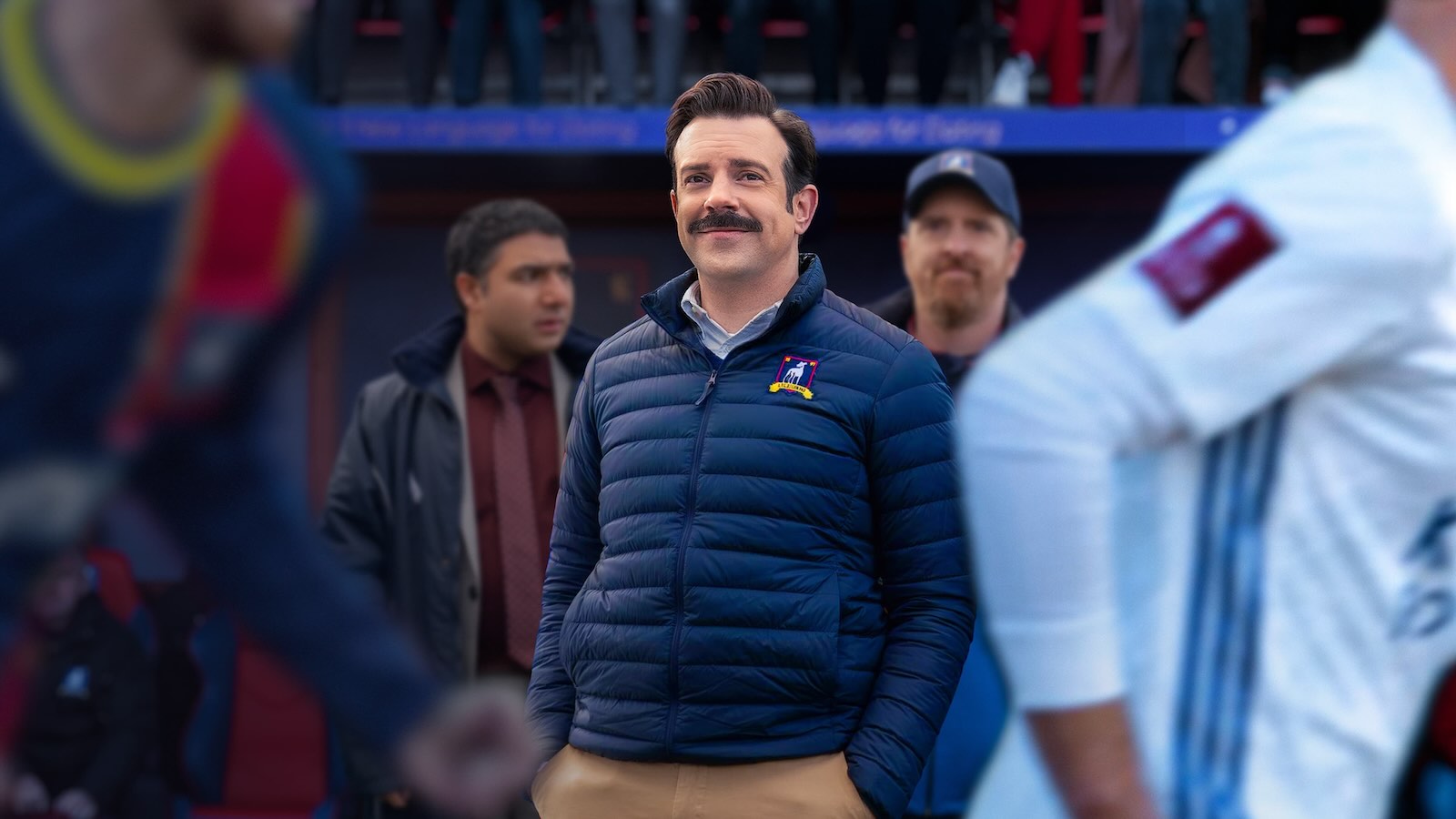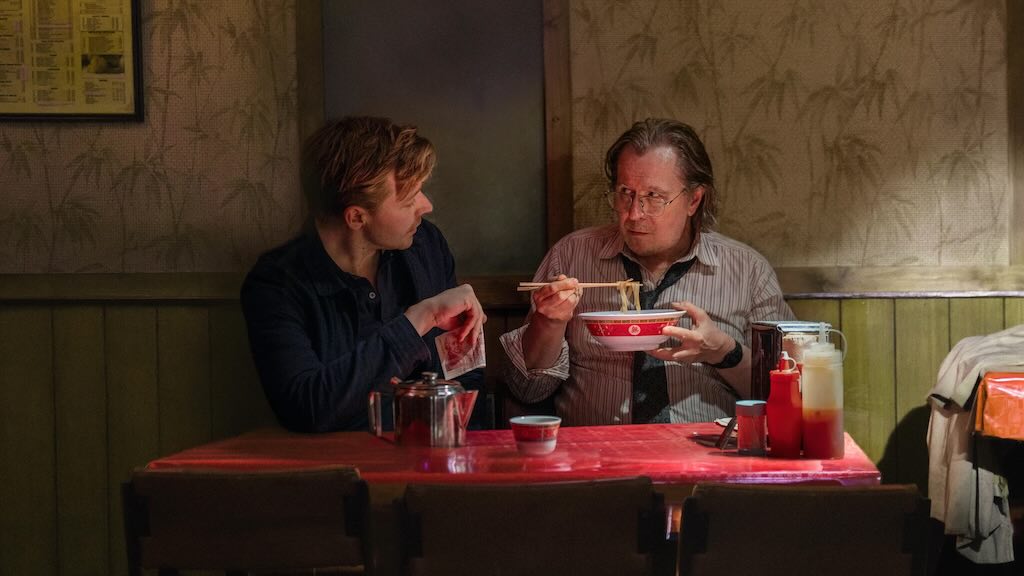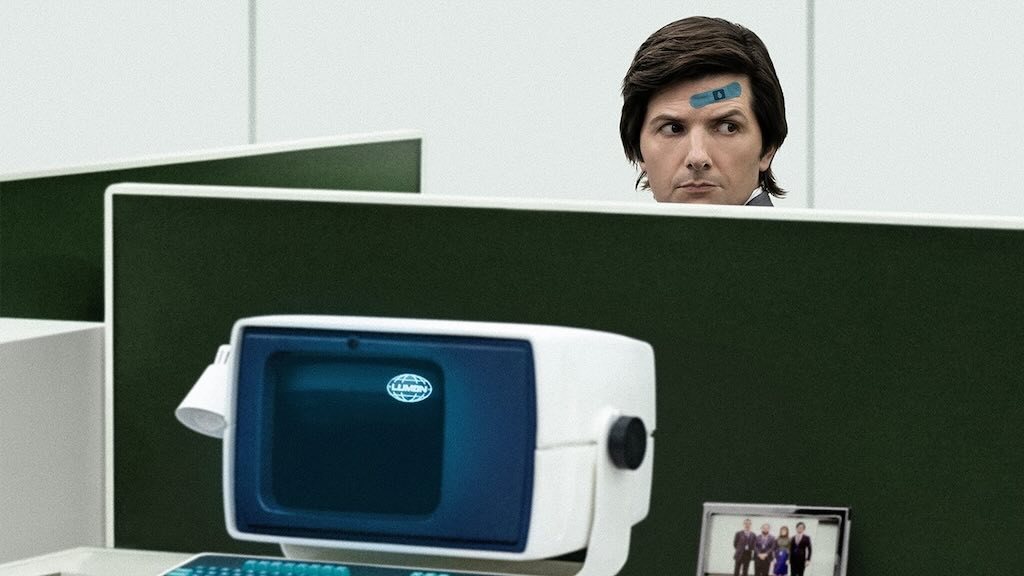
Film & TV
Apple TV+ shows are some of the best
Why is no one watching in such a crowded marketplace?
When Apple set out to create a streaming product that fit with the brand, they set a high bar for the tv shows and films available on the service. Out of the gate there were some stand out shows: For All Mankind, Dickinson, Severance, Slow Horses, Lessons in Chemistry, and the most surprising hit, Ted Lasso, to name a few, have shown that Apple knows how to foster good storytelling. But from the little insight, analysts have come to believe Apple TV+ sits at 9th place among streamers after Peacock and ESPN.
Since the service launched November 1, 2019, Apple has shared subscriber numbers once—in March 2022 reported 25 million subscribers worldwide plus an additional 50 million under promotion (basically the amazing trials given out with Apple hardware purchases). And in the two years since, there’s little idea where Apple ranks. This has raised important questions about whether anyone is actually watching TV+ and how long Apple can sustain the current investment.
Fans of Apple TV+ shows have been praising the long list of great shows, referring to TV+ as the new HBO thanks to good short series that prioritize quality over quantity, setting the standard for the premium television series (AMC has similarly produced premium shows). For some there’s relief that Apple has taken the mantle given what HBO has become—the struggles Warner Brothers has had before and after the Discovery takeover, show cancellations stacking up, and few new quality shows in the pipeline.
Apple TV+ even won the bidding war to produce their third Spielberg/Hanks World War 2 show, Masters of the Air, when HBO had created the first two limited series Band of Brothers and the Pacific sequel. Some analysts have wondered if this investment has paid off—Masters of the Air received mixed reviews and sits with a 70% audience score on Rotten Tomatoes. While the show is well-made, intense and captivating, in many ways it lacks the character cohesion we had in Band of Brothers, which considering what the Bloody 100th went through it’s understandable. We’ll never know what HBO would have made. Apple is seen as the best studio for creatives, where people in Hollywood want to work. Yet the same crew was likely would have produced the same show with HBO.
Related: The changing broadcast and streaming options in 2024
The broadcast landscape is evolving, and it may come quickly. All attention is now focused on the streamers, and the race to survive. Cord-cutters and cord-nevers are waking up to see they’re simply replaced the cost of the cable bundle with all the streaming services needed to get all the best content. This means there will be casualties as consumers opt not to subscribe to certain platforms. Of course it’s entirely possible the smarter streamers will become hyper focused on a specific market or genre rather than have them all chase the majority as they did with broadcast.
Of the three main US broadcast networks, ABC is only barely part of the third-place Disney+ service, and CBS and NBC are distant fifth and seventh place with Paramount+ and Peacock respectively. Both parent studios Paramount and Universal might finally take note of how Sony has avoiding playing the game and instead become what industry watchers call a “content arms dealer” (in fact Sony TV makes some of the key Apple TV+ shows including For All Mankind). Paramount and Universal have good content relationships already, with some of their content being licensed to Netflix and others. Would they bow out from streaming?
Industry insiders see a day where consumers are left with two to three main streaming platforms, which could easily be the cable tv replacement bundled up by the cable companies. At the moment Netflix is likely a clear candidate for the list. Until recently Amazon’s Prime Video was not seen as a contender for the top streamers—like the offering from Apple, Prime Video is a piece of a larger subscription service, literally thrown into Prime. The MGM purchase and a recent switch to the bundled video offering being ad supported suggests Amazon might be positioning itself after all. With the creation of a sports streaming partnership similar to how three networks collaborated on Hulu, maybe the best answer is for a new co-owned streamer.
Previously Amazon would have been grouped in with Apple, and if they’d been successful, the bundle from Google—tech companies whose main business is not entertainment. Following the MGM purchase, analysts have wondered when Apple will by a studio, mostly for the library, but it would come with a backup plan should the streamer pull the plug. Prime taking second place is not yet clear, Disney+ may be 50 million subs behind, but Amazon’s 200 million seems suspect. Still for the two streamers to be Netflix, Disney and Amazon seems more likely than one of the remaining traditional studios pulling ahead.

Where does this leave Apple? For some the answer might be “who cares”, but again the worry is the content may just disappear. A year ago Apple might have, along with Amazon, been the fifth and fourth streamers, but ones less concerned with being solely in the tv streaming game. With a little adjustment to the bundle, TV+ could easily sustain much like how HBO and AMC have been premium and niche speciality channels running movies to fill off peak time. There’s no empty airtime in streaming, but your platform does need to be sticky enough to keep people attached.
As Apple has not bought a studio as Amazon did, they don’t have a back catalogue of content, but more than that, they don’t have an actual studio. While Apple does have a good relationship with Sony TV (and Sony Picture/Columbia) as well as David Ellison’s Skydance (which is rumoured to be wanting to acquire Paramount), how likely is it that they would buy either studio? Because Apple has shown it can be the place Hollywood creatives want to work with, and considering how the industry as a whole is changing, fears arise that the mantle won’t be passed on after Apple. Will it be a casualty of peak tv cresting?
One approach Apple took that has been good but sadly not successful was their channels approach copied by Amazon. Where Amazon sold a cheap streaming dongle, the Apple approach, that they in the past called a hobby, is the more premium Apple TV box. On it you can combine your TV+ shows with other offerings from most other streamers except Netflix and Prime, giving viewers an excellent interface to keep you finding the next thing to watch. For their part Netflix and Prime don’t want to work with Apple and provide the viewing data for the next up feature, reducing the desire to use the feature and the two leading services (Netflix probably doesn’t ever want you to leave their app). Could those streamers see Apple as a competitor rather than a partner? Amazon has shown it can’t sell Fire/Kindle phones, and Netflix hasn’t been able to grow outside their main product (not that that is bad).

Switching off TV+ wouldn’t be ideal for viewers. Apple hasn’t made it easy to support the service, charging premium prices for very little content. However just as HBO likely benefited from having more content, they were easier to bundle in with premium cable. Apple might need to rethink positioning their Apple One bundle as it has the most benefits and could easily be paired with other services. Curiously when you buy many Apple devices, iPhone, iPad, Apple TV or Mac, you’re offered separate 3 month trials for each service instead of the better single bundle. It might seem more likely customers would keep the better priced bundle rather picking the individual services, and keeping all the separate services seems unlikely.
Ideally it would also be nice if Apple was still offering the 12 month trial with those device purchases—one could replace one Mac, iPhone and iPad device per year on rotation, and always get the benefit of Apple One. Or bundle Apple Care+ with Apple One, but with the ability to easily pause Apple One without stopping your warranty. What else? increase Cloud drive space in the bundle (seriously 50GB is nothing), or remind people Apple Music is included. Apple One might be a good value (at $19.95 US for US customers, it’s a better deal than Netflix, which may have more content but no music streaming), but unlike Amazon Prime, the bundle hasn’t become engrained, and it may need a must-have core service or simply more marketing. (Just aside, how is Spotify number one and Apple Music a distant second in some markets? Spotify and Netflix combined is over $30 US a month.)
At the end of the day Apple TV+ is producing some of the best TV available, and despite recent Oscar snubs (there were way too many good films last year), the acclaim is justified. But the market is also extremely crowded, and somehow the ability to stand out as individual channels managed to on the dial has not become clear to Apple (or frankly anyone other than Netflix). Apple doesn’t need to leave the market, it doesn’t need a huge pivot, it may just need a few iterations and to wait out the other streamers. But again, picking up Paramount or especially Sony TV won’t hurt.